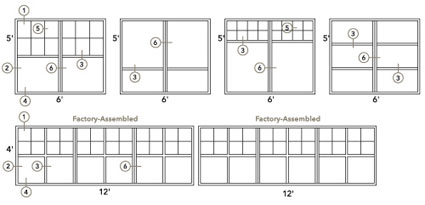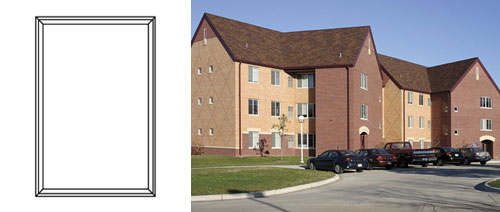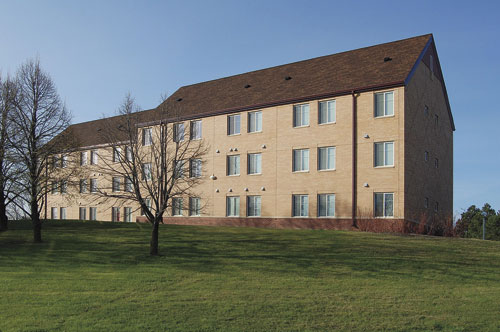Fiberglass Windows: A Sustainable Choice in Non-Residential and Multi-Family Buildings
- Hybrids. In some cases, it is desirable to combine the various techniques in one or more window units. Hence it is possible to specify integral mullions, grilles-between-the-glass, and applied grilles, for example, all to be combined on the same window and create the desired appearance. (See Figure 11.)
  |
 |
Figure 11: Fixed frame composites with optional combinations of integral mullions, applied grilles, and grilles-between-the-glass. Mixing and matching window types, glazing styles, grilles and sizes allow for creative variations within a single building design. Images courtesy of Pella Corporation |
|
Â
Clearly, the range of options and choices available allow for a wide variety of ways to meet particular design requirements and style preferences. Further, the ability to combine and subdivide units in multiple ways allows for creativity without sacrificing performance.
Design Applications and Case Studies
Incorporating fiberglass window units into a particular building design often comes down to the type of opening that the architecture calls for. Depending on the number and configuration of windows and doors per opening, design recommendations for perimeter clearances, weight limitations, wind loads, and water management may vary. Four types of window design openings are highlighted through the design recommendations and case study examples that follow. Â
Punched Opening into a Façade
Design recommendations
To determine the window opening size for typical punched opening installations, add 3/4" to frame width and height. For punched openings with large windows, multiple windows, out of plumb openings, and/or in masonry construction, the need for additional jamb clearances should be reviewed. Depending on the sequence of construction, many methods of attachment are available for anchoring fiberglass windows to the wall. (See Figure 12.)
 |
|
Figure 12: Dana College dorm utilizing punched opening window design Images courtesy of Pella Corporation |
|
Â
Case Study: New dormitory at Dana College, Blair, NE Architect: RDG Planning and Design |
Selecting windows for a college dormitory poses some unique challenges. At Dana College, a small private campus in Blair, Nebraska, the college president wanted a residential, not institutional, character for the students' suite-style housing. Due to the nature of a typical student population-and previous window problems on campus-durability and abuse resistance were important design criteria, along with budget constraints and energy efficiency.
|










